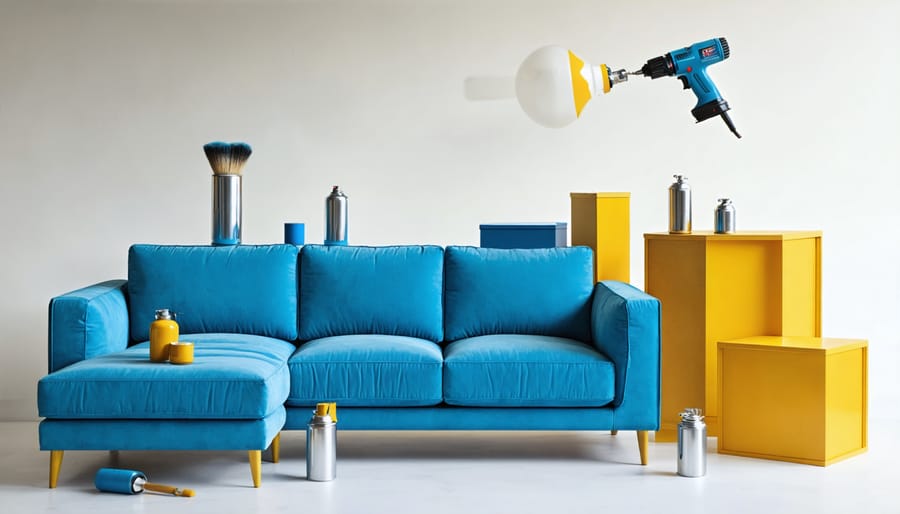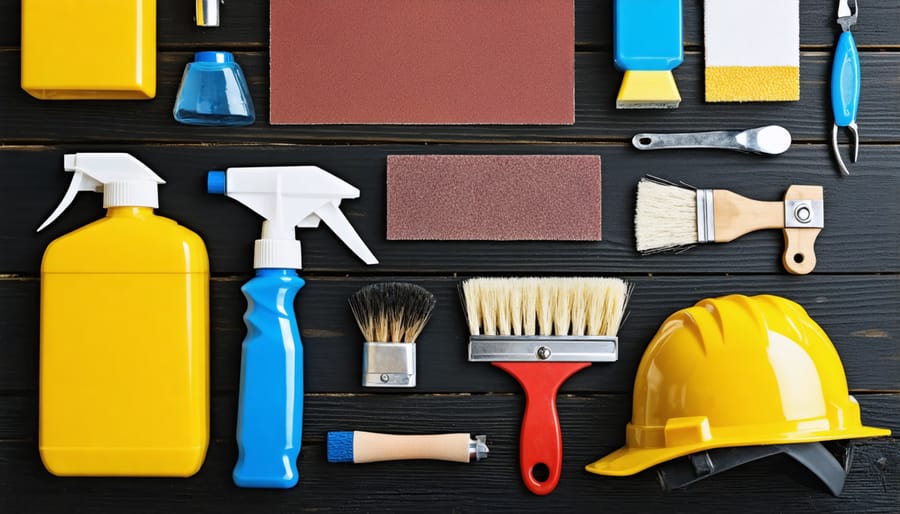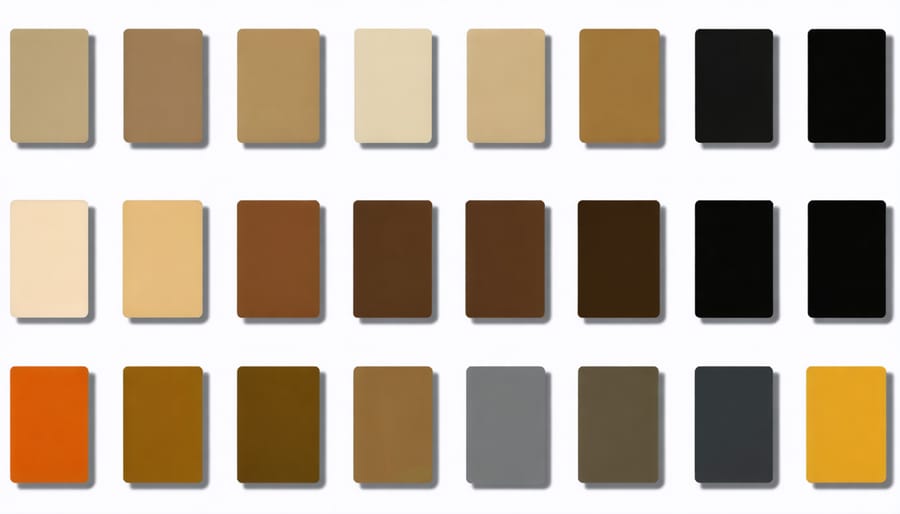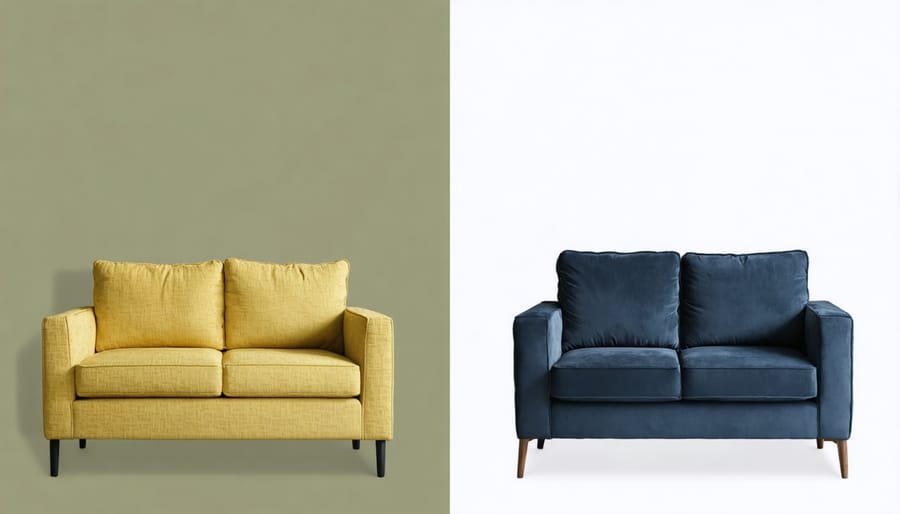
Transform outdated furniture into contemporary masterpieces using professional painting techniques that deliver showroom-quality results. Modern furniture demands precision preparation, including thorough degreasing, strategic sanding, and proper primer selection to ensure optimal paint adhesion on sleek surfaces. High-end finishes require specialized tools – HVLP sprayers deliver the smooth, streak-free coverage essential for modern pieces, while micro-foam rollers eliminate brush marks when hand-applying paint. Select premium water-based acrylic paints specifically formulated for furniture, offering superior durability and a flawless finish that withstands daily use. Current design trends favor bold solid colors, metallic accents, and matte finishes that enhance modern furniture’s clean lines and minimalist aesthetic. Master these techniques to achieve professional results that rival factory finishes, whether refreshing a single statement piece or updating an entire collection.
Modern furniture often features diverse materials that require specific preparation approaches. Begin by identifying the primary surface material through visual and tactile inspection. Wood veneer surfaces typically have a distinctive grain pattern and smooth finish, while laminate surfaces display a more uniform appearance with a slightly plastic-like feel. Metal components, common in modern pieces, may be aluminum, steel, or chrome-plated materials.
For wooden surfaces, lightly sand a small, inconspicuous area to determine if it’s solid wood, veneer, or engineered wood. Laminate surfaces will show a clear synthetic layer over a substrate. Plastic surfaces often have molding seams and a characteristic texture. Metal elements can be identified using a magnet – steel will attract it, while aluminum won’t.
Each material demands different preparation methods. Wood surfaces typically need light sanding and proper priming, while laminates require specialized bonding primers. Metal components must be degreased and treated for rust if present. Plastic surfaces need specific plastic-adherent primers to ensure paint adhesion. Always perform a small test patch in an inconspicuous area to confirm proper adhesion before proceeding with the full project.

Before applying any paint, proper surface preparation is essential for achieving a professional finish on modern furniture. Begin by thoroughly cleaning the surface with a degreasing solution to remove oils, dirt, and residues. For wooden surfaces, use a mild soap and water mixture, while metal pieces may require a specialized metal cleaner.
Once clean, assess the surface texture. For glossy or previously finished pieces, start with medium-grit sandpaper (120-150 grit) to create a suitable surface for paint adhesion. Work in the direction of the wood grain on wooden furniture, applying even pressure to avoid creating deep scratches. For metal surfaces, use fine-grit sandpaper or sanding sponges to maintain the smooth finish characteristic of modern pieces.
Progress to finer-grit sandpaper (220-320) for the final sanding phase. This step ensures an ultra-smooth surface that will showcase the clean lines of modern furniture. After sanding, remove all dust with a tack cloth or vacuum with a brush attachment, followed by a wipe-down with mineral spirits. This meticulous preparation process guarantees optimal paint adhesion and a flawless final appearance.
Modern furniture materials require specific paint types to ensure durability and a professional finish. For metal surfaces, use epoxy-based paints or specialized metal paints that contain rust inhibitors. These provide excellent adhesion and protect against corrosion, making them ideal for steel or aluminum furniture pieces.
When working with plastic or laminate surfaces, opt for paints specifically formulated for synthetic materials. Look for products labeled as “plastic-adhesion promoter” or “bonding primer” before applying the final coat. These create a strong foundation that prevents peeling and chipping.
For engineered wood and MDF furniture, water-based acrylic paints work exceptionally well. They offer good coverage and a smooth finish while allowing the material to breathe. However, always seal MDF edges first to prevent moisture absorption.
Glass and high-gloss surfaces require specialty paints designed for non-porous materials. Consider using glass paints or high-adhesion primers followed by your chosen paint type. For concrete or composite furniture, use masonry paints or exterior-grade acrylics that can withstand environmental stress while maintaining their appearance.
Remember to always test your chosen paint on a small, hidden area first to ensure compatibility and desired results.

To achieve professional results when painting modern furniture, you’ll need a carefully curated set of essential repair materials and tools. Start with high-quality brushes in various sizes, including both synthetic and natural bristle options for different paint types. A foam roller set is crucial for achieving smooth, streak-free surfaces on larger areas.
For surface preparation, gather 120-220 grit sandpaper, sanding blocks, and a palm sander for efficient material removal. Tack cloths and microfiber rags are essential for removing dust and ensuring a clean surface before painting. You’ll also need a reliable respirator mask, protective eyewear, and chemical-resistant gloves for safety.
Include a paint tray with liners, stirring sticks, and a paint strainer to maintain paint consistency. For precise work, painter’s tape in various widths helps create clean lines and protect hardware. A well-lit workspace with proper ventilation is crucial, so consider investing in portable work lights and fans. Store your supplies in airtight containers to maintain their quality between projects and ensure professional results every time.
Modern furniture painting offers three primary application methods, each with distinct advantages for different projects. Spray painting delivers the smoothest, most professional finish and works exceptionally well on pieces with intricate details or hard-to-reach areas. When using this technique, maintain a consistent distance of 8-10 inches and apply thin, even coats with overlapping strokes.
Rolling is ideal for larger, flat surfaces and offers quick coverage with minimal overspray. Use high-density foam rollers for the best results, as they leave minimal texture and provide even distribution. This method works particularly well on table tops, cabinet doors, and drawer fronts where a uniform finish is crucial.
Brush application, while more time-consuming, allows for precise control and works well on smaller pieces or detailed areas. Select high-quality synthetic brushes designed for your specific paint type. Apply paint in long, smooth strokes, always working in the same direction to minimize brush marks. For optimal results, thin your paint slightly if needed and apply multiple light coats rather than one heavy layer.
For complex pieces, consider combining methods. For example, use spray painting for detailed legs and spindles while rolling larger surfaces. Remember to maintain consistent pressure and speed with any method you choose, as this ensures even coverage and professional results.

Modern furniture demands special finishes that complement its sleek, contemporary aesthetic. One popular technique is the matte finish, achieved by using ultra-low sheen paint and finishing with a fine-grit sanding pad. For a metallic effect, apply a base coat followed by metallic paint using a foam roller for streak-free results.
The high-gloss look, signature to modern design, requires multiple thin coats of paint and proper curing time between applications. Use a high-quality foam roller or HVLP sprayer for the smoothest finish. For best results, sand lightly between coats with 320-grit sandpaper and finish with a clear protective coat.
Textured finishes can add visual interest to modern pieces. Create a subtle texture using specialty rollers or by adding texturing additives to your paint. For a concrete-like appearance, mix paint with fine sand and apply with a trowel in irregular patterns.
Color blocking remains trendy in modern furniture design. Achieve clean lines by using high-quality painter’s tape and allowing each section to dry completely before moving on to adjacent areas. For an ombré effect, blend two or more colors while the paint is still wet, working quickly with a dry brush technique.
Distressed modern finishes offer an industrial edge. Apply a dark base coat, followed by a contrasting top coat. Once dry, strategically sand edges and corners to reveal the underlying color, creating controlled wear patterns that maintain a contemporary feel.
To protect your newly painted modern furniture, applying a proper sealing coat is essential. Begin with a clear water-based polyurethane sealer, applying thin, even coats with a high-quality foam brush or sprayer. For maximum durability, apply 2-3 coats, allowing each to dry completely and lightly sanding between applications with 320-grit sandpaper.
For pieces that will see heavy use, consider using a professional-grade clear coat specifically designed for furniture. These products offer superior protection against scratches, water damage, and UV rays. When working with metallic or high-gloss finishes, opt for a non-yellowing formula to maintain the paint’s original appearance.
The final coat should be applied in a dust-free environment at room temperature. Allow the piece to cure for at least 72 hours before normal use. For outdoor furniture, choose an exterior-grade sealer with UV inhibitors to prevent fading and weather damage. Regular maintenance with furniture polish will help preserve the finish and extend its lifespan.
To maintain your furniture’s finish and protect your investment, regular care is essential. Clean your painted furniture surfaces monthly using a soft, slightly damp microfiber cloth to remove dust and debris. Avoid harsh cleaning products or abrasive materials that could damage the paint finish. Place protective felt pads under decorative items and avoid placing hot or wet objects directly on painted surfaces.
Apply a high-quality furniture wax or protective coating annually to seal and protect the paint. When moving painted furniture, always lift rather than drag to prevent scratches. Keep pieces away from direct sunlight and maintain consistent room temperature and humidity levels to prevent paint from cracking or peeling.
Address any chips or scratches promptly with touch-up paint to prevent further damage. For heavily used pieces, consider applying an additional clear coat every few years to refresh the protective barrier and maintain the furniture’s pristine appearance.
Painting modern furniture requires attention to detail, proper preparation, and the right techniques to achieve professional results. While this guide provides a comprehensive overview of the process, some projects may present unique challenges that require expert knowledge and specialized equipment. For complex restorations, intricate designs, or valuable pieces, consulting with a professional furniture restoration specialist can save time and ensure optimal results. They can assess the specific needs of your furniture, recommend appropriate materials, and execute the project with precision. Whether you choose to tackle the project yourself or seek professional assistance, remember that proper surface preparation, quality materials, and patience are key to achieving a beautiful, lasting finish that enhances your modern furniture pieces.